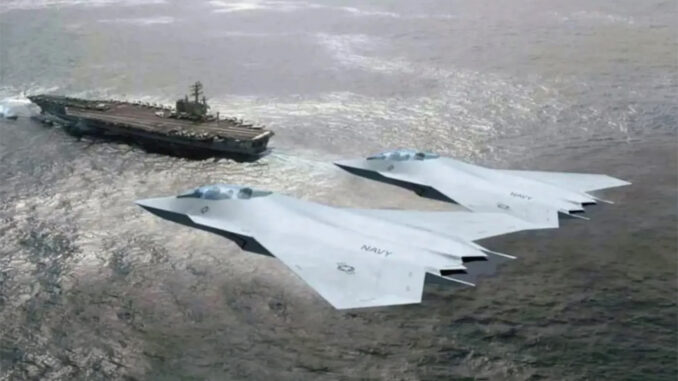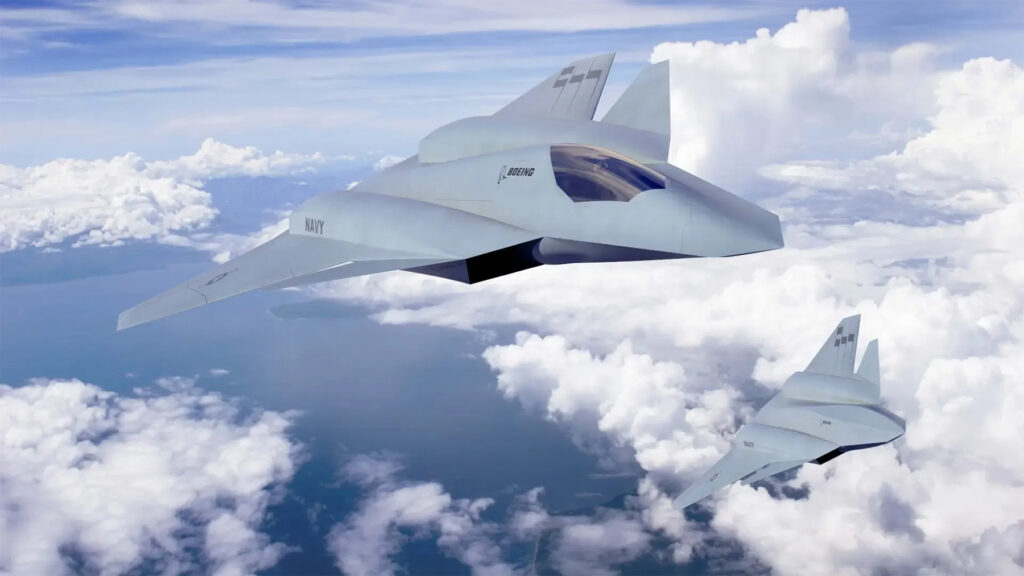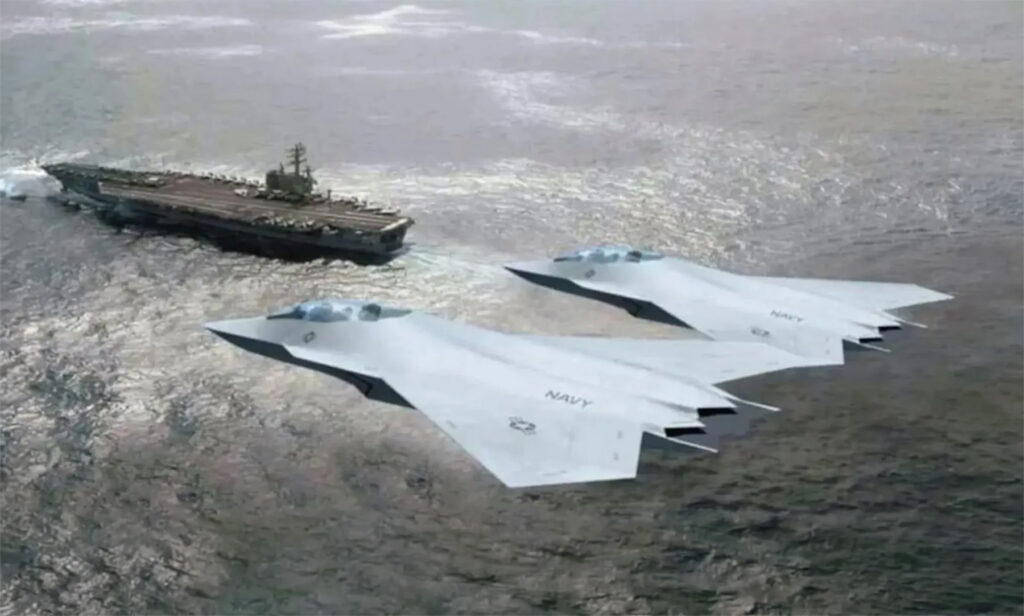
Analysis of the uncertain future of the US Navy’s F/A-XX programme and its reduced funding by the Senate. Implications for defence.
The US Navy’s F/A-XX programme, aimed at developing a sixth-generation fighter aircraft, is facing a drastic budget cut by the US Senate. This decision raises questions about the future of the programme and similar initiatives by the US Air Force. While the funding requested was $453.828 million, only $53.828 million could be allocated. This article explores the technical details, strategic issues and consequences of this budget reduction.
The US Navy’s Next Generation Fighter (F/A-XX) programme is designed to develop a sixth-generation fighter aircraft to replace the F/A-18 Super Hornet. However, a proposed budget cut by the US Senate threatens the future of this ambitious project. This article looks in detail at the technical and strategic implications of this decision.

Budget cuts: figures and context
Initial budget and proposed cuts
The initial budget request for the F/A-XX programme for fiscal year 2025 was $453.828 million (approximately €413 million). However, the Senate is proposing to reduce this funding to $53.828 million, a reduction of almost 90%. This reduction comes after a first significant decrease from the initial request of $1.53 billion for fiscal year 2024.
Example in figures
The budget of $453.828 million was intended to cover concept development and maturation costs. The proposed reduction to $53.828 million drastically limits the programme’s ability to progress.
Navy development and priorities
F/A-XX programme phases
The F/A-XX programme has recently completed the concept refinement phase and has entered the design maturation phase. Boeing, Lockheed Martin and Northrop Grumman are the main competitors for the aircraft design, while General Electric and Pratt & Whitney are vying to supply the engines.
Priorities and sacrifices
In March 2024, the Under Secretary of the Navy, Erik Raven, stated that the reduction in funding for the F/A-XX was a deliberate decision to prioritise other critical investments such as operational readiness and submarine capabilities.
Strategic consequences
Impact on air superiority
The F/A-XX is designed to operate as a “system of systems”, integrating collaborative combat drones and other advanced technologies to maintain the US Navy’s air superiority. Budget cuts compromise these capabilities, potentially delaying the integration of technologies crucial to future operations.
Comparison with the US Air Force’s NGAD programme
The US Air Force’s Next Generation Air Dominance (NGAD) programme, which also aims to develop a sixth-generation fighter, faces similar challenges. Air Force Secretary Frank Kendall has cited the need to review design concepts to reduce costs. Each NGAD is currently estimated to cost about three times the unit cost of an F-35, or about $247.5 million (about €225 million).
Consequences for the defence industry
Economic impact
The reduction in funding for the F/A-XX directly affects major US defence companies such as Boeing, Lockheed Martin and Northrop Grumman. These companies rely on these contracts to maintain their competitiveness and capacity for innovation.
Effects on research and development
Budget cuts may lead to significant delays in the research and development of new defence technologies. This could also reduce the United States’ ability to maintain its technological lead over competitors such as China and Russia.

Alternatives and potential solutions
Additional funding
It is possible that additional funding for the F/A-XX could come from classified sources or other parts of the defence budget. However, this remains uncertain and will depend on the progress of budget negotiations in Congress.
Reassessment of priorities
The Navy and Air Force may have to re-evaluate their priorities and consider alternative solutions to meet their air modernization goals. This could include compromises on certain features or increased collaboration with international partners.
The US Navy’s F/A-XX programme, essential for maintaining air superiority and technological innovation, is facing a drastic budget cut by the Senate. This decision has far-reaching implications for US defence, the defence industry and long-term military strategy. While alternative solutions are possible, the way forward remains uncertain and will depend on future political and budgetary developments.
War Wings Daily is an independant magazine.